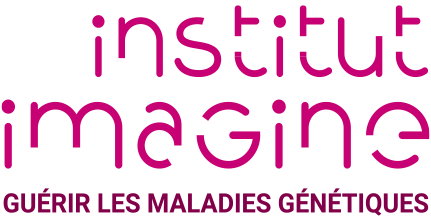Published on 28.11.2019
Maïa: the first symptoms in the discovery of the altered gene
Even though Maïa’s family now know the origin of the disease, it took more than 6 years to discover it. The symptoms go back to Maïa’s first few months: Maïa’s father, a doctor, detected the first signs of delayed development very early on. At 2 years old, she did not extend her fingers, showed no particular interest in games, often flitted from one thing to another. Her attention span was short and not a lot of progress was made. Everything gave the impression that Maïa had an autistic disorder. At the same time, genetic analyses were performed following an appointment with Dr. Rima Nabbout in 2010 at Necker-Enfants Malades hospital. The techniques available at the time showed no sign of a genetic anomaly.
Faced with the unknown, the anxiety and worry of early and suitable care, the parents mobilized several volunteers to ensure care that was ongoing, suitable and stimulating for Maïa. However, at the age of 3, Maïa had her first epileptic fit. A second happened 6 months later. The fits then became more and more frequent up to the point of it happening 50 times a day. At 6 years old, the treatments were intensified. The increase of treatments only seemed to exacerbate the frequency of the fits. They offered a corpus callosotomy, a neurosurgical operation . With no success.
Maïa could not talk, could not walk alone. She needed to be held constantly to prevent her from hurting herself during a fit. It was at that time that her parents decided to come back to Imagine Institute in the hope that advances in diagnosis would uncover the origin of their daughter’s disease. From the analysis of 118 genes usually associated with forms of epilepsy, it transpired that Maïa had a KNCB1 gene mutation. Dr. Rima Nabbout told them that Maïa was the first patient that they cared for with this mutation.
Maïa: coming together to overcome the disease
Another fight then began for Maïa’s parents. For Mélissa, Maïa’s mother, discovering the origin of her daughter’s disease had to lead to something, anything else was impossible for her. “I immediately asked what I could do”, she explained. Dr. Rima Nabbout said to her “so, if you find about ten patients in France, we may be able to do something”. Nights of searching the internet began until Mélissa found Sherry’s blog, an American mom whose child also has a KCNB1 mutation. “At that moment, my first reaction was to say that we were no longer alone”, recalls Mélissa. “Speaking with Sherry, I learnt that 11 other people worldwide were carriers of this anomaly.” Then one day, Sherry called her to tell her that she had been contacted by another family in France, who were 50km away from Maïa and her family. “We made contact with Alice, whose daughter Soline had the mutation, then it was Catherine’s turn, mom of 30-year old Léonard monitored in Paris, and finally Fannie, mom of 5-year old Juliette who had the mutation and lived near Poitiers” remembered Mélissa.
In total, 8 families came and joined the ranks of Mélissa’s fight. In August 2017, together, they decided to create the KCNB1 association. Their goals: to identify families, join with them, attract the interest of doctors and researchers and encourage research on the KCNB1 gene mutation that their children suffer from.
Maïa: Knowing that research is ongoing gives hope
“Everyone thought they were alone, said Mélissa, and in the end about ten families met in December 2017 at Imagine Institute for the first time. Being together helped us to recognize the rights of our children and facilitate their care. We help each other, support each other and above all we are part of the same family: this small mutation created a family connection between us all.” After the first meeting, a research program coordinated by Edor Kabashi, head of a research team at Imagine Institute and Dr. Rima Nabbout, head of the Reference Center for Rare Epilepsies, was launched. “Knowing that they are looking and that they may find something gives strength to all the families.” rejoices Mélissa. To help the research, the association, the only one in the world around the KCNB1 gene to date, has already raised 62,000 Euros.
Everyone thought they were alone, and in the end about ten families met in December 2017 at Imagine Institute for the first time.
Open on a European level
From now on, the association has decided to go a step further: on March 30, 2019, 25 families including 4 from Italy, one from Norway, one from Denmark, one from Spain, one from Germany, one from Belgium and one from Serbia, will meet together. Why? because the association is already thinking of tomorrow “If the research program leads to a therapeutic avenue, which is one of the goals all the same, a clinical trial has to be launched, Maïa’s mother explains to us hopefully. Joining together with European families, we will have an even greater power to put it in place. The more of us there are, the more we will mobilize.”

